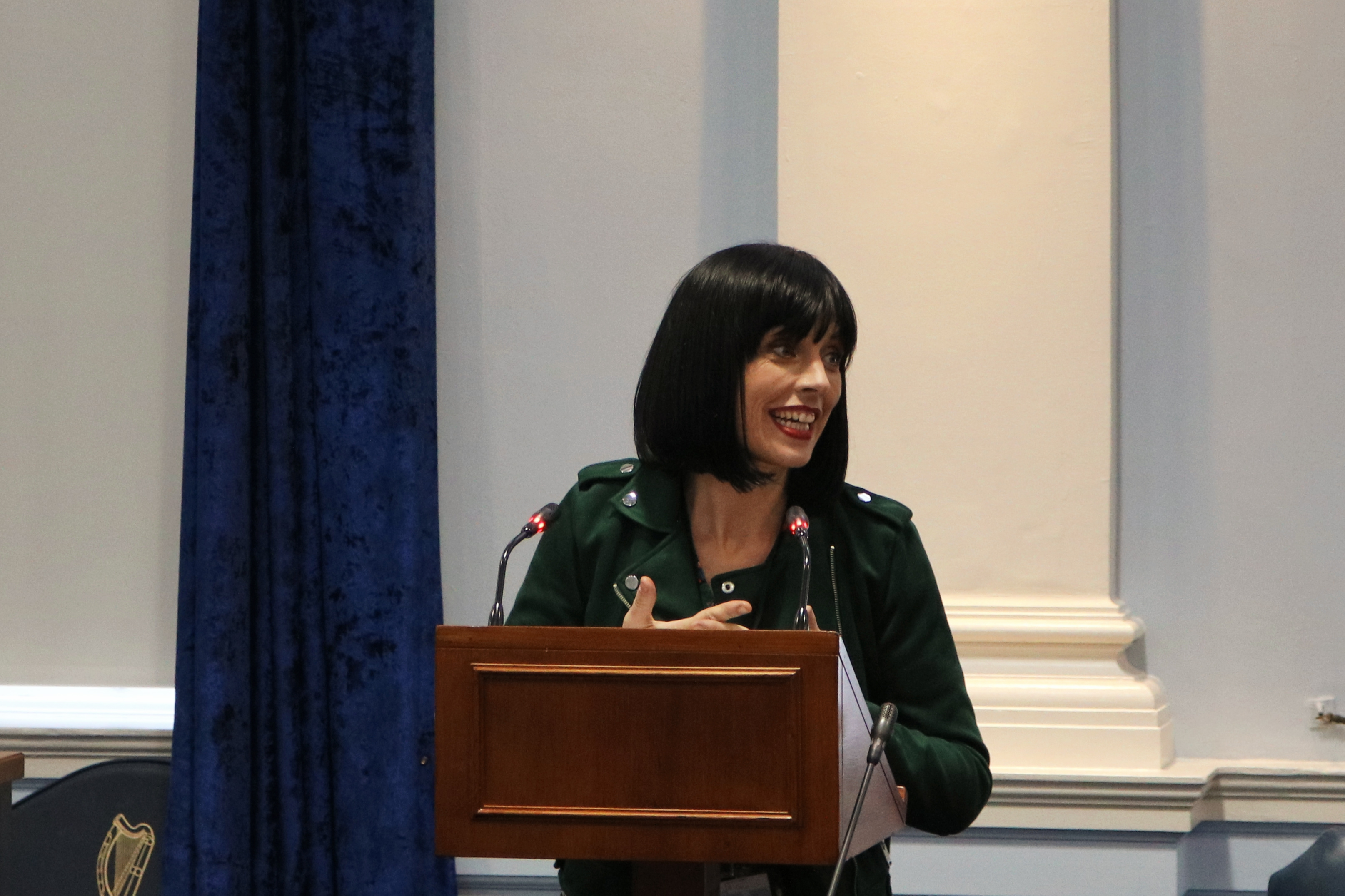
As some of you may know, Leinster House is a labyrinth. On my arrival on Friday afternoon for the Culture Night poetry event, “Gold Air and the Blue: 100 Years of Women’s Suffrage”, I was led through a maze of corridors on my way to the Seanad chamber. It seemed fitting that all of the guides and organisers were women. Women were once forbidden from stepping foot in the Seanad – it is only thanks to some remarkable women that they can do so today.
The event was opened by a spokesperson from the National Museum of Ireland, who encouraged us to visit the Votes for Women exhibition after the poetry concluded. Each of the poets were individually lauded by the broadcaster Olivia O’Leary, who acted as the afternoon’s host and introduced the first speaker, Minister for Arts, Heritage and the Gaeltacht Josepha Madigan. The title of her poem, “Diet Coke”, caused some amusement among the audience members, but laughter soon died away as the piece explored the effect of prolonged sickness in family members and their approaching death.
O’Leary then gave an outline of the history of women’s suffrage in the Seanad, praising the activists Countess Markievicz, Eva Gore-Booth and Hannah Sheehy-Skeffington. She went on to introduce the afternoon’s first poet, Martina Evans. Evans’s new collection, “Now We Can Talk Openly About Men”, was published this year and takes its name from a quip her mother made following Evans’s divorce. The collection narrates the experience of two fictional women, one of whom is a dressmaker in Mallow in 1919. Her name is Kitty Donovan and it was in her persona that the poet performed the poem. Evans spoke without notes, all the while acting out the emotions, questions and mannerisms of her fictional character.
The second poet to perform was Moya Cannon. A child of county Donegal, much of the poet’s work was inspired by this region. She opened with a poem in honour of her grandmother, in which she imagined her grandmother’s relief when her husband (Cannon’s grandfather) turned back on his way to the 1916 Easter Rising. The second poem was dedicated to Lady Gregory – who Cannon felt should have been a senator – Sheila O’Donnell and Gobnait, an ancient Irish saint of Munster. Cannon depicted the West Coast and Lady Gregory’s sketching of the area. In her final poem, the poet described a migrant community of herring fishermen and the women who followed them from Donegal to Scotland.
The third and final poet was Doireann Ní Ghríofa. She performed five poems – one of which, “Four Cormorants”, was written for the event and given to each guest afterwards as a memento. Her poem “While Bleeding” describes her finding a red coat from 1915, the history it has absorbed and what Ní Ghríofa terms the “connections between women”. The theme of female experience was furthered by “Jigsaw”, a poem about pregnancy and motherhood, and concluded with “Brightening”. This last work depicted the burning of the big houses and was Ní Ghríofa’s personal response to Austin Clarke’s “The Planter’s Daughter”.
The event was concluded by Director of Poetry Ireland, Maureen Kennelly, and following an afternoon of literary nourishment, the audience was welcomed downstairs for tea and biscuits. The event left me hopeful and emboldened by the creative resilience of women, both past and present.






